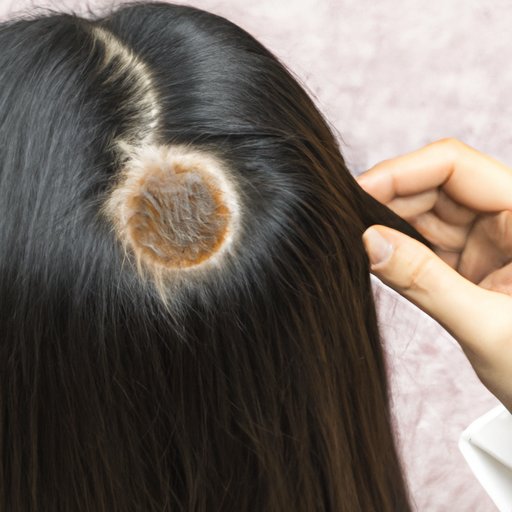Introduction
Hair thinning is a common issue that affects many people. It can be caused by a variety of factors, including hormones, genetics, stress, diet, and medical conditions. While it’s normal to lose some hair each day, excessive hair shedding may indicate an underlying issue. People who are concerned about hair thinning should take the time to monitor their hair for any signs or changes.
Check for Signs of Hair Loss in the Shower
One way to check for signs of hair loss is to look for clumps of hair in the shower drain. If you notice more than the usual amount of hair in the drain after showering, this could be a sign that you’re losing more hair than usual. Additionally, it’s important to pay attention to any changes in the texture or amount of hair when washing and conditioning. If you feel like there’s less hair than usual, this could be another indication of thinning.
Monitor Your Parting Line
Another way to monitor for signs of hair thinning is to pay attention to your parting line. Take note of any changes in the size of the part and if any scalp is visible. If the part seems wider than usual or if you can see more scalp than before, this could be a sign of hair thinning.

Examine Your Daily Hair Shedding
It’s also important to track the amount of hair shed each day. To do this, try an at-home hair pull test. Gently run your fingers through your hair and then pull out any strands that come out easily. Count the number of hairs pulled out and keep track of it over time. If the number increases significantly, this could be an indication of hair thinning.
Track Your Ponytail Circumference
In addition to tracking your daily hair shedding, it’s also important to measure your ponytail circumference regularly. To do this, simply gather your hair into a ponytail and measure the circumference using a soft tape measure. Record the measurements and compare them over time. If you notice a decrease in the circumference, this could be a sign of hair thinning.

Look at Your Scalp Visibility
Finally, it’s important to look for signs of scalp visibility. Run your hands through your hair and take note of any bald spots or areas where the scalp is more visible than usual. This could be a sign of hair thinning.
Consult a Trichologist
If you’re experiencing any signs of hair thinning, it’s important to seek help from a professional. A trichologist is a specialist in hair and scalp health who can assess your condition and provide advice on possible causes and treatments. Explain your concerns to a trichologist and they will be able to provide you with the best course of action.
Conclusion
Hair thinning is a common issue that affects many people. There are several ways to monitor for signs of hair thinning, such as looking for clumps of hair in the shower drain, tracking your daily hair shedding, measuring your ponytail circumference, and examining your scalp visibility. If you’re concerned about hair thinning, it’s important to consult a trichologist who can assess your condition and provide advice on possible treatments.
(Note: Is this article not meeting your expectations? Do you have knowledge or insights to share? Unlock new opportunities and expand your reach by joining our authors team. Click Registration to join us and share your expertise with our readers.)
